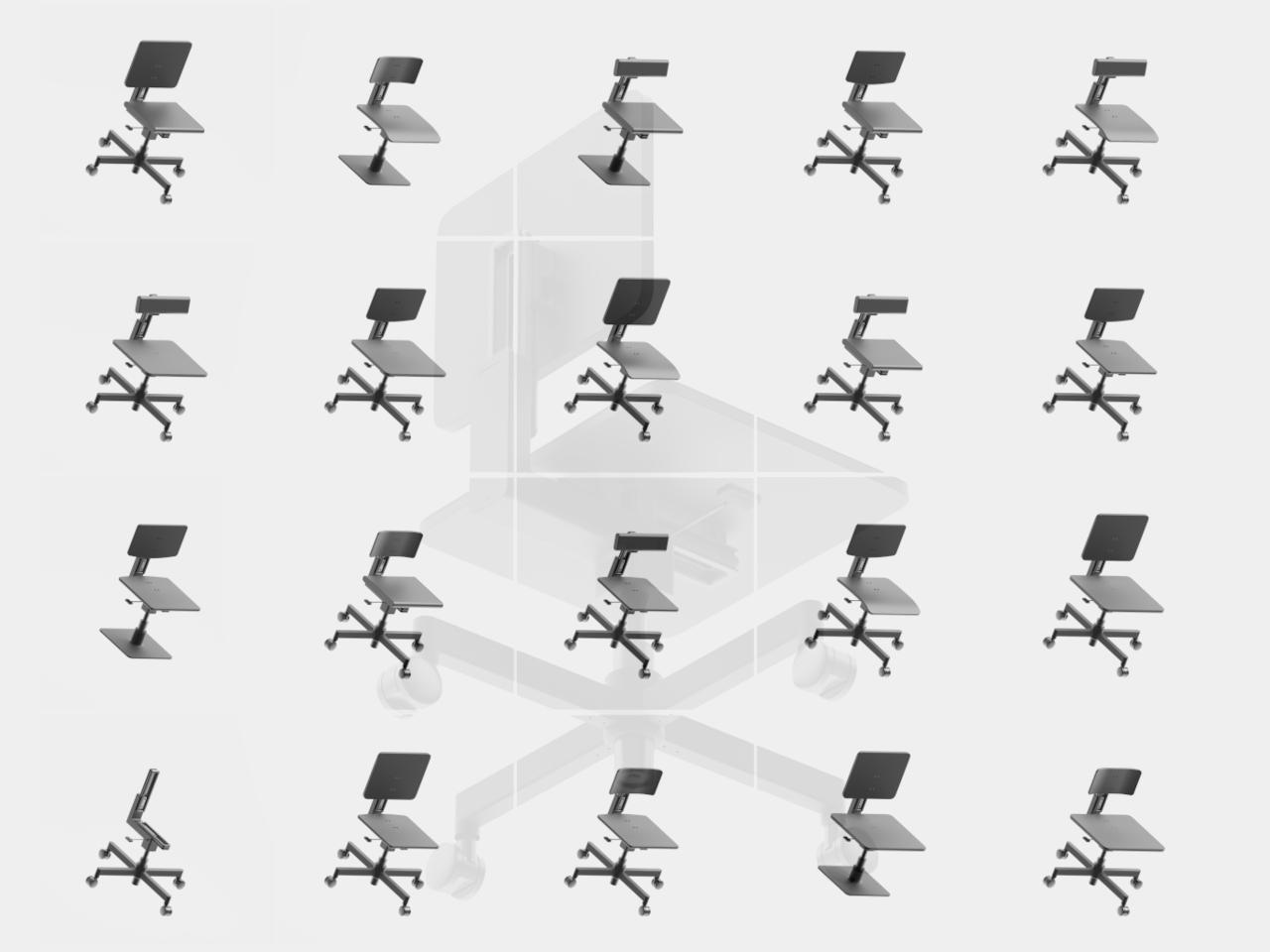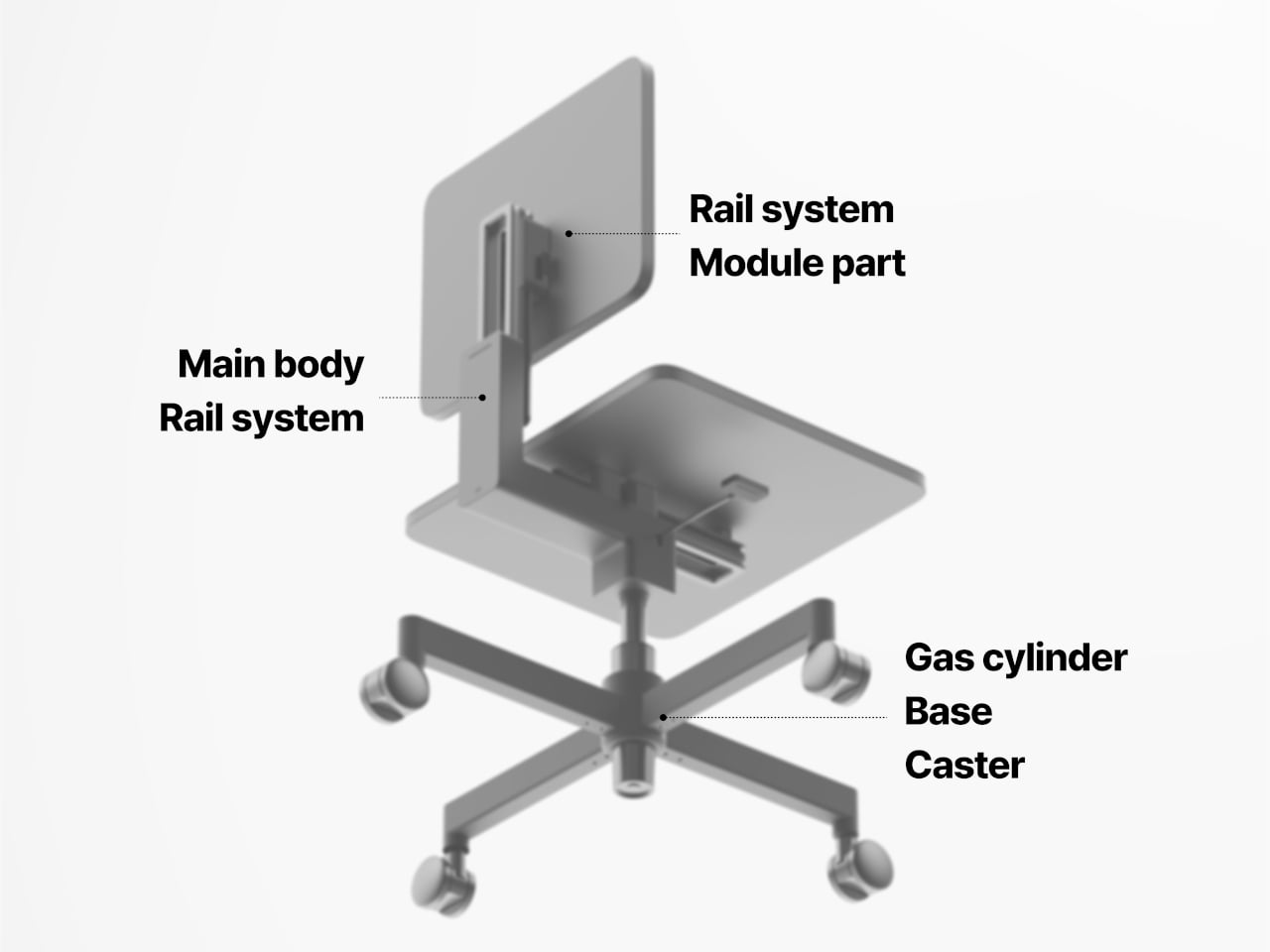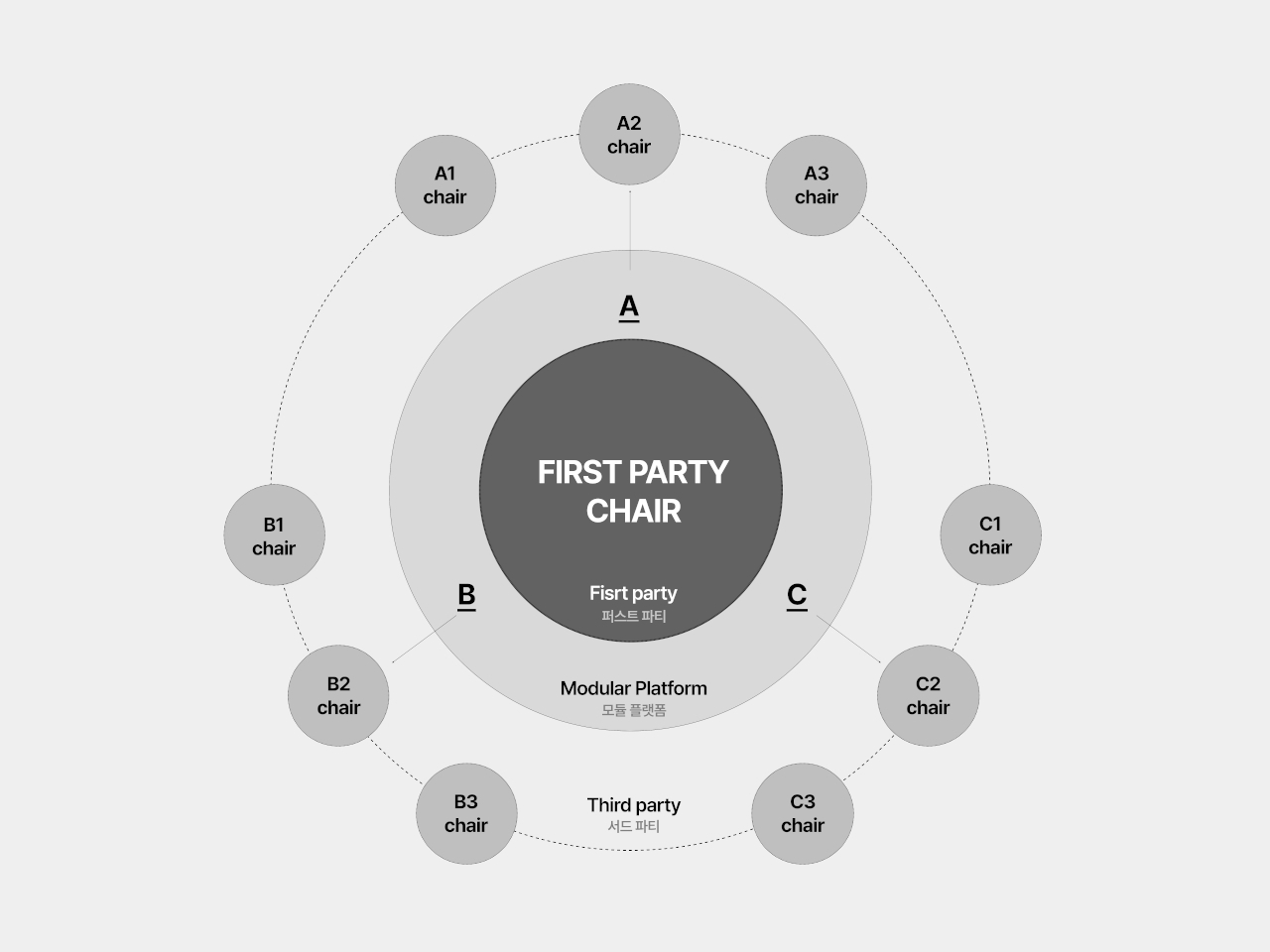
Given how many hours a day and how many days a week people work in front of their desks, the need for comfortable and ergonomic chairs is more important today than ever. Although work-from-home arrangements have made it possible to pick your own chair, that isn’t true for offices that buy generic chairs in bulk to keep costs down. While almost all manufacturers promise comfort, not everyone defines that word the same way.
A chair with an ergonomic yet cost-effective design would be great, but it would be even better if people could customize it to their own comfort without breaking the bank. That’s the kind of office chair heaven that this concept tries to envision, and unsurprisingly, it uses a modular design to solve that kind of problem.
Designer: Byeongjun Kang


To some extent, the typical computer chair with four to five wheels and height-adjustable backrests already has the foundations of modularity. They’re often flat-packed and require some assembly, so it’s just one step away from adjusting that design to accommodate other parts. You just need the right connections to use.
FP, or “First-Party,” Chair concept design uses a rail system to make that not only possible but also easy. The seat and the backrest are the main modular parts that can be removed and replaced by any compatible design. It starts out with completely flat designs, but these can be swapped out for ones with cushions, curves, and armrests. Anything that can fit that rail system will do as long as it keeps the chair balanced.
The base is also replaceable, though the options are probably fewer. You have the typical caster for movability or a flat platform for stability. The latter can probably be screwed down as well, which might be necessary for some mass installation. There isn’t much wiggle room for differentiation here, especially since the need for stability is even greater.
The FP Chair doesn’t differ from those mass-produced office chairs in terms of packaging convenience or assembling complexity. There are also still some limits to what modular designs can be used, such as the balance of the chair and its stability. As with any modular system, it will also depend on just how many third-party designs take advantage of this feature, though given the need for personalization and customization, one can easily imagine how big that market could be.